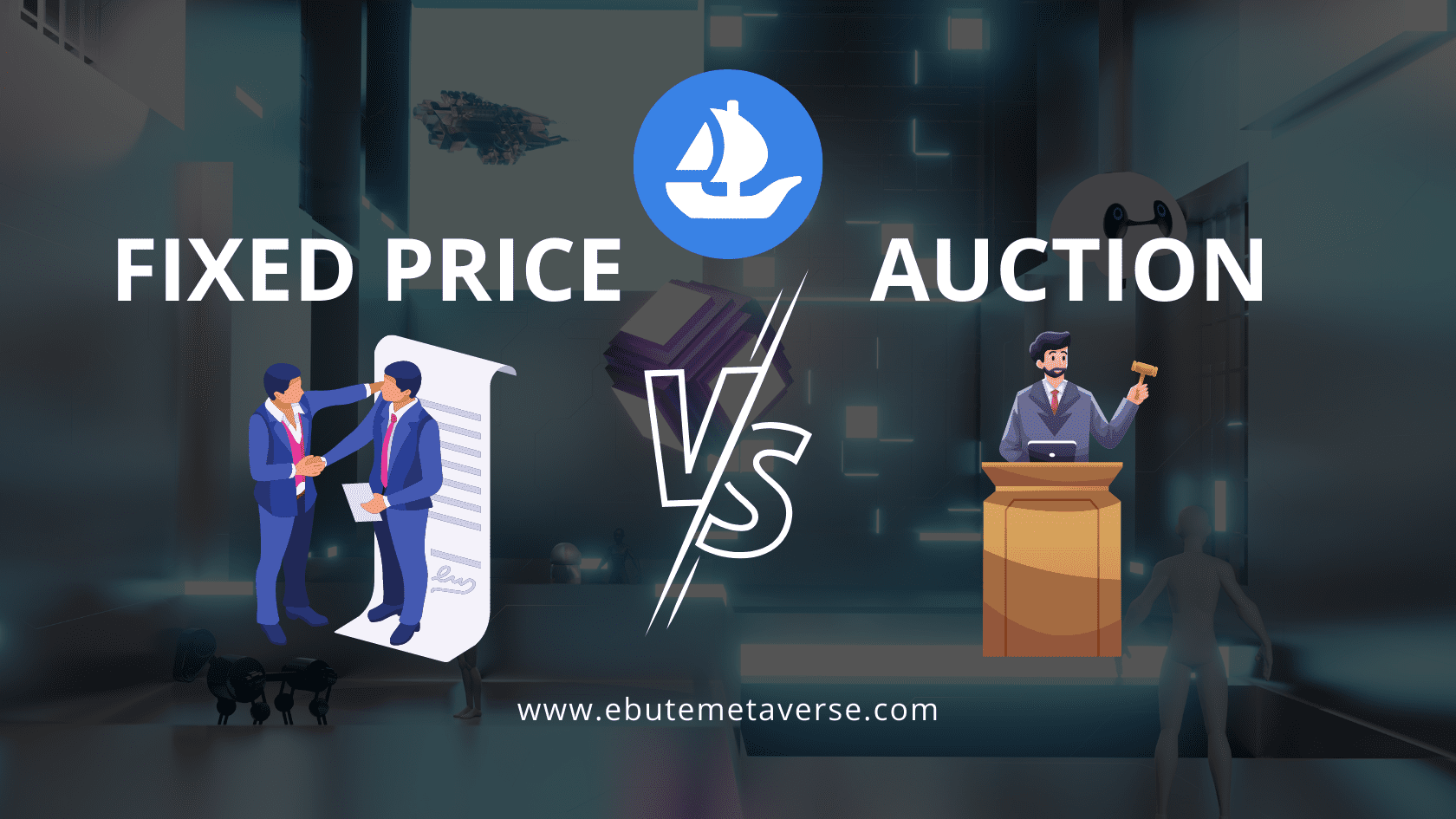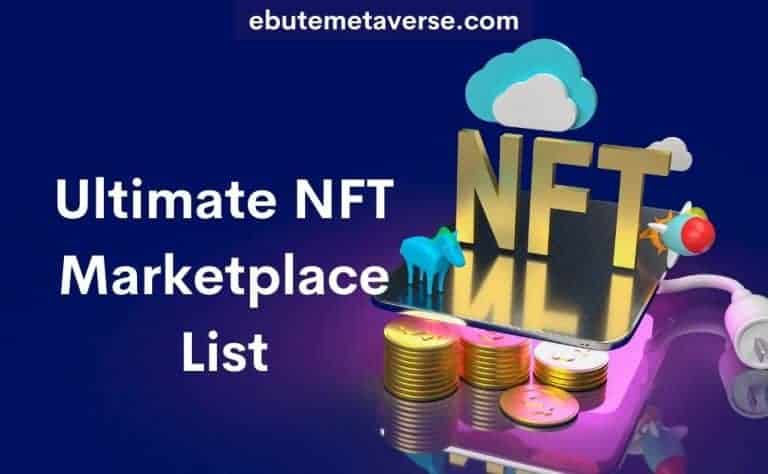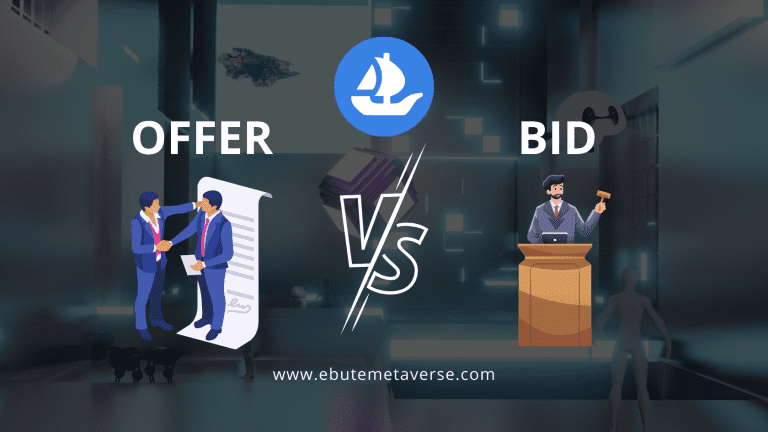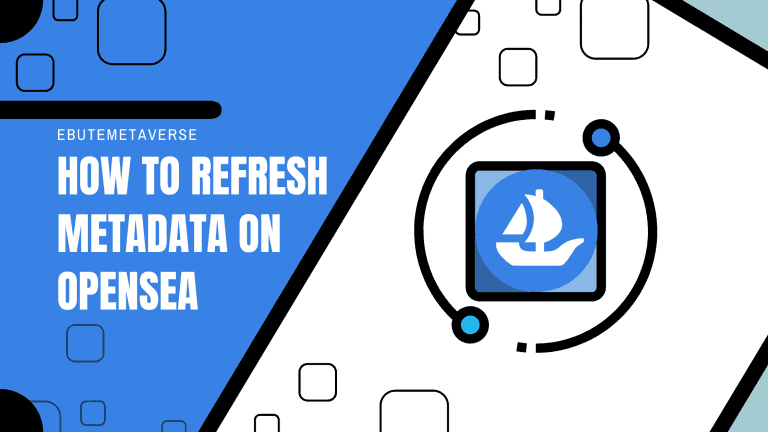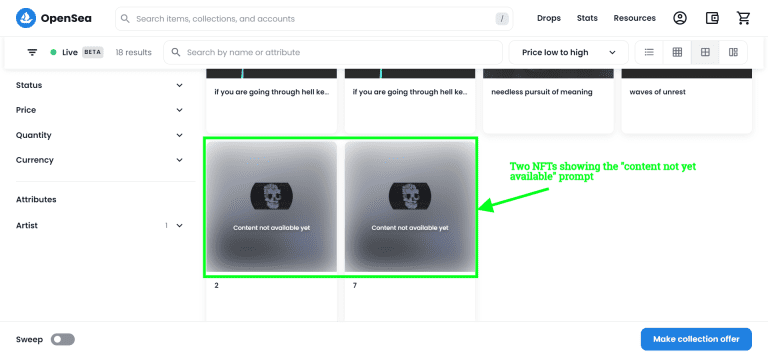Fixed Price or Auction on OpenSea: Which is Better?
When it comes to selling your NFTs on OpenSea, there are mainly two common options: setting a fixed price or putting it up for auction. Deciding which method is best for your NFT in the popular marketplace can be challenging since it’s hard to predict which one will yield the most profit.
A fixed-price is the best and simplest way to sell on OpenSea. Firstly, it gives you more control over the price of your NFTs. Also, fixed-priced NFTs do better than auctioned NFTs on OpenSea. However, which selling technique is best for you would depend on your preferences, interest, and target audience.
But there are certain conditions that you’ll gain more using the auction approach. This article will explain when to use fixed price or auction on OpenSea to help you make the most of your sales.
Let’s get started!
Opensea Fixed Price vs Auction: Side-By-Side Comparison
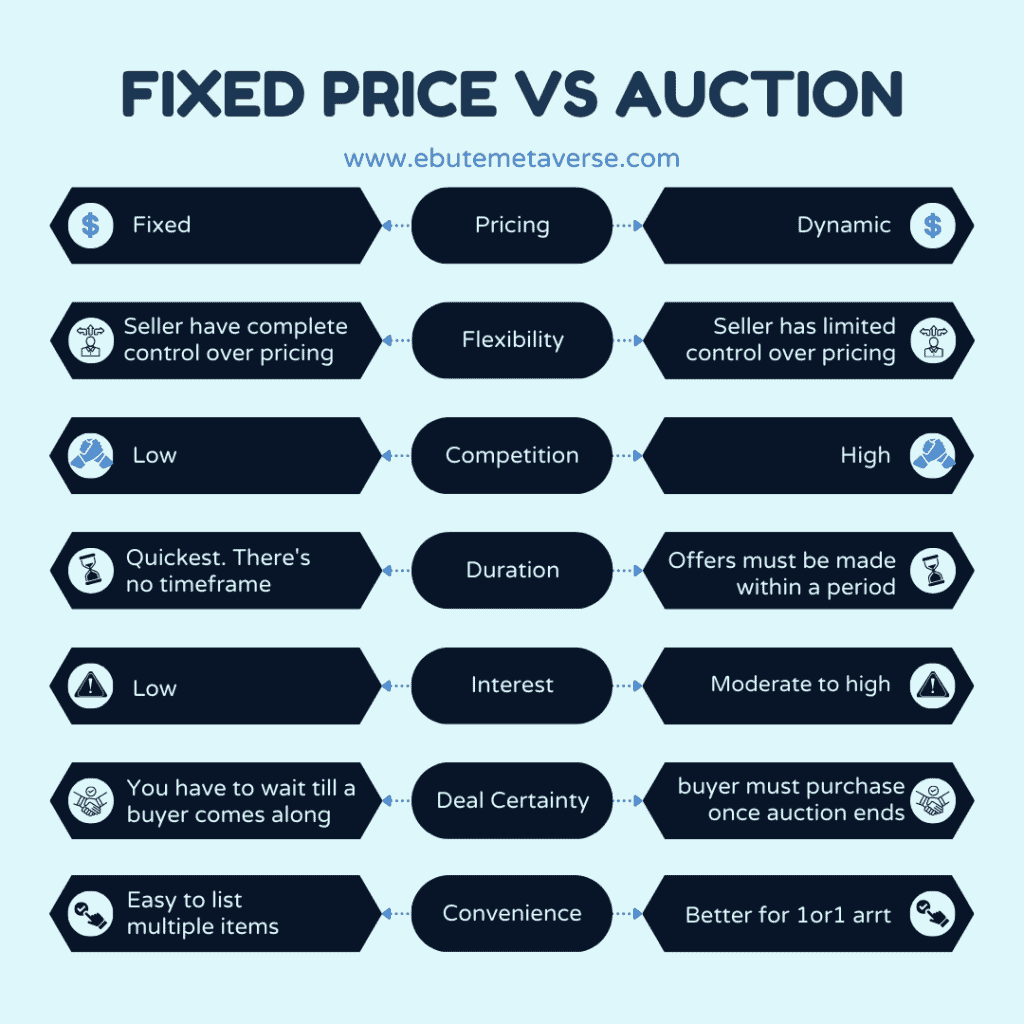
Summary:
Fixed Price allows sellers to set a predetermined price for their NFT, and buyers can purchase it at any time. This option is suitable for sellers who want more control over their NFT’s pricing and allows for quicker sales.
However, Fixed Price listings may not generate as much interest or excitement as Auction listings, which could limit potential profitability.
Auctions, on the other hand, are more competitive and timely as they have a sense of urgency that the Fixed Price model does not. In Auctions, buyers can submit bids on the NFT, and the highest bidder wins. This style may increase passion and interest in the NFT, leading to higher selling prices.
In addition, Auctions allow sellers to discover the true market value of their NFTs as buyers may submit bids above the item’s estimated value.
However, auctions require more time from both the seller and the buyer, and there is no guarantee that the item will sell or sell for a high price, making it riskier for the seller.
Fixed Price on OpenSea: How Does It Work
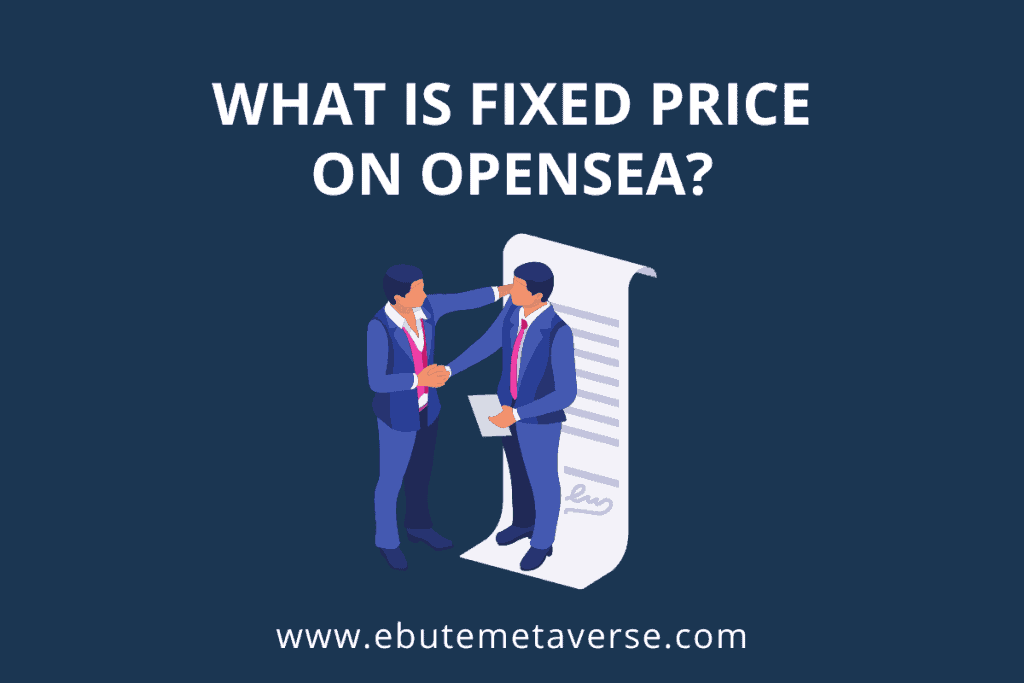
Selling an NFT at a fixed price is the simplest NFT sales technique on OpenSea. The buyer can purchase the NFT at the price the seller sets without bidding. If the item is sold, it will be at a price the seller sets.
If you want to sell your NFT at a fixed price, simply follow these steps:
- Visit the NFT page on OpenSea
- Then, click the “Sell” button in the top right corner.
- From here, all you have to do is follow the price and duration guidelines to create an offer.
- Once a buyer accepts the offer, and the blockchain confirms the transaction, the item will be immediately transferred to the buyer’s wallet from yours.
Note: When accepting an offer for your NFT, remember you have to pay a gas fee. Additionally, payment for the NFT will be made in WETH instead of ETH, although the two currencies are equivalent in value.
However, you can modify or withdraw the fixed-price listing if you change your mind. Also, remember that only you can remove the listing, which requires gas fees.
Pros and Cons of Fixed Price Listing on OpenSea
Fixed-price listings offer a simple and automated process for selling NFTs. Since there’s a pre-agreed price, it eliminates the need for sellers to spend time calculating their profit. In addition, listings on OpenSea remain active until the NFT sells or a predetermined time elapses.
However, the downside of this strategy is that it limits potential revenue since the bid level is regulated.
When Should You Use a Fixed Price on OpenSea?
No specific type of NFT is guaranteed to sell better on OpenSea using a fixed price. However, using a fixed price on OpenSea would be great if your NFT collection has a strong community following. This pricing method can help you quickly sell your NFT and ensure buyers receive what they perceive as a fair and reasonable price.
Furthermore, note that the success of selling an NFT at a fixed price depends on various factors. Some of these factors include the NFT’s quality, rarity, perceived value, and overall demand among potential buyers. This knowledge will help you assess how well your NFTs would sell on OpenSea using a fixed price.
Many popular NFT projects use a fixed-price approach with huge success. For example, CryptoKitties, a collection of digital collectible cats, sold out using fixed prices. Also, Bored Ape Yacht Club sold out in less than an hour, with some apes selling for over $1 million each.
Auctions on OpenSea: How Does It Work
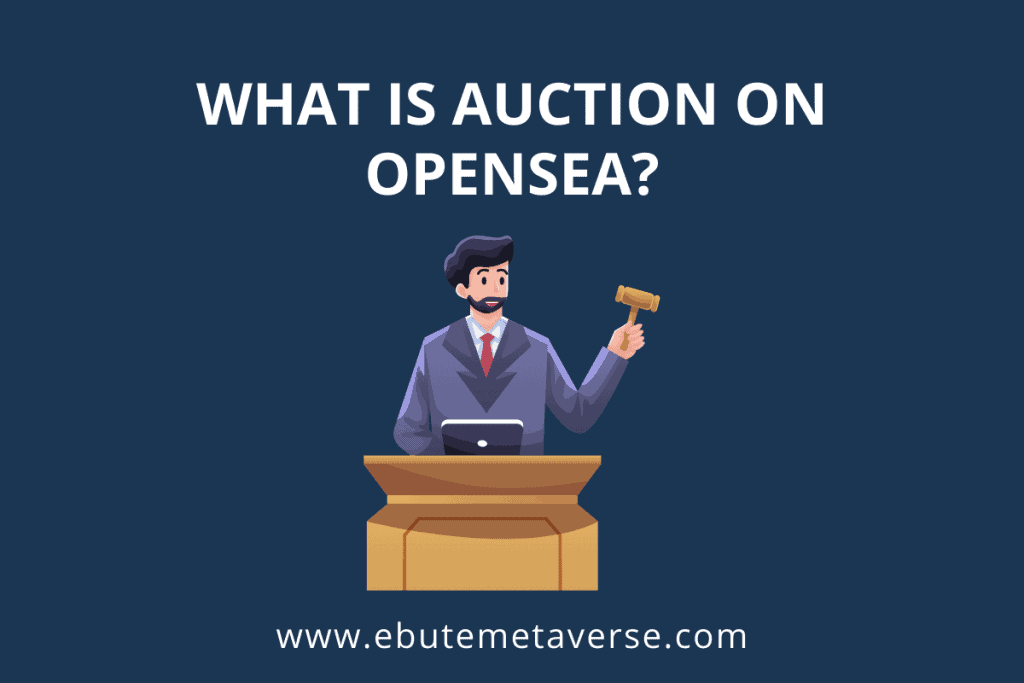
OpenSea provides two types of auctions:
- English Auction (offering to sell to the highest bidder) and,
- Dutch Auction (declining in value until a buyer emerges).
It’s important to note that OpenSea does not handle timed auctions for Solana or ERC-1155 tokens with multiple owners.
English Auction
English auctions, also called sell-to-highest-bidder auctions, allow for high-stakes bidding. However, OpenSea allows sellers to choose whether to accept or decline the highest bid. Also, bids made in the last 10 minutes extend auctions by 10 minutes, and sellers can set reserves, but not lower than 1 ETH.
It’s important to note that OpenSea covers gas expenses for auctions ending with over 1 ETH. However, accepting the bid would incur a gas fee if the highest bid is less than 1 ETH.
Pros and Cons of English Auctions on OpenSea
The main advantage of selling your NFTs through English auctions on OpeaSea is its ability to connect products with buyers at the best market value. Also, it’s considered to be more effective than fixed-price marketplaces.
In addition, auctions tend to be more captivating and draw in more buyers, increasing the likelihood of a successful sale. Since the auction on OpenSea works similarly to the old auction system, NFT deals are conducted in a highly reliable way.
However, there are some drawbacks to consider. First, the item will not be guaranteed to sell, and auctions with no offers occur frequently. Also, in traditional auctions, buyers primarily drive the process, leaving sellers with limited control over participation or knowledge of appropriate buyers.
Dutch Auction
If you’re selling an NFT that’s losing value over time, consider using a Dutch auction. This auction type is similar to a fixed-price listing, but the price decreases over time.
Staying vigilant and selling the item immediately is crucial to maximizing your profits. Keep a close eye on the item’s price and market trends to avoid missing the opportunity to sell it at the best possible value. Our article on NFT dutch auction explains the concept better.
Pros and Cons of Dutch Auctions on OpenSea
Dutch auction offers several benefits, including its ability to determine prices effectively, its popularity in traditional finance IPOs, and its ability to maintain buyers’ interest.
The game theory elements of this auction design may result in higher prices for sellers, as buyers who are uncertain may be willing to pay more. Additionally, goods sold through the Dutch auction system generally perform well.
However, there are some drawbacks to this auction process. Bidders may feel guilty about their winning bid and believe they overpaid.
Also, because the auction emphasizes uncertainty, prices for buyers tend to be higher. It’s important to consider these factors when participating in a Dutch auction and to be aware of the potential risks and rewards.
When Should You Use Auction on OpenSea?
Auctions on OpenSea can be useful for selling NFTs when determining the item’s value is challenging. For instance, if you have a collection of highly rare NFTs, putting them up for auction could be a wise choice. This method allows interested buyers to bid on the item, potentially leading to a higher sale price.
CryptoPunks and “Everydays: The First 5000 Days” by Beeple are examples of NFTs that have been successfully sold through OpenSea auctions.
Should You Use a Fixed Price or Auction on Opensea?
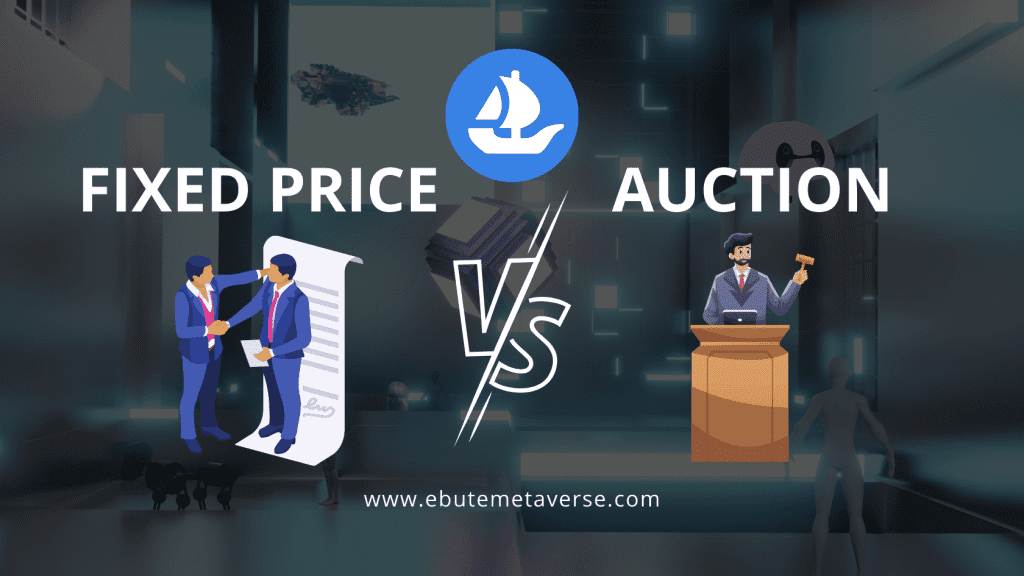
Fixed price is the simplest way to sell your NFT on OpenSea. Once you’ve paid your first-time fees on the platform, you don’t pay anything else once you sell your NFT.
Both OpenSea’s set price and highest bid mechanisms have their perks and downsides, which you should consider before making a choice. Several factors, such as the NFT’s value, the creator’s goals, and buyers’ interest can determine the ideal model.
A good strategy is to combine both models for your NFT collection. This method can help increase the overall value of the NFTs in your collection. But no matter which model you choose, make sure your listings are clear, detailed, and appealing to buyers.
Conclusion
Choosing between a fixed price or auction on OpenSea to sell your NFTs depends on your specific goals as a seller.
If you’re looking to quickly sell an item for a set price, fixed pricing may be the best option. However, an auction might be a better solution if you want to generate buzz around your product and potentially earn more.
Overall, it’s essential to consider the pros and cons of each approach and choose the one that fits your needs and preferences. As a buyer, you can check out our article on offers vs bid to know which profits you most.
Remember that regardless of your pricing strategy, OpenSea offers a unique opportunity for creators and collectors to succeed in the exciting world of NFTs.

